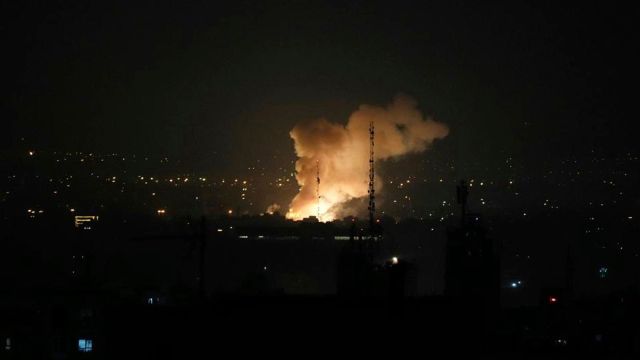
In the early hours of June 13, 2025, Israel launched a wave of coordinated strikes on Iranian military and nuclear facilities in what it named Operation Rising Lion. Israeli Chief of Staff Eyal Zamir called it “a fight to preserve our existence,” declaring that the country had reached “a point of no return.” According to the Israeli military, the operation was a pre-emptive measure against an immediate and growing threat to its national security.
The strikes targeted what Israel described as the heart of Iran’s nuclear programme. Six nuclear scientists were reportedly killed, along with Hossein Salami, head of the Islamic Revolutionary Guards Corps (IRGC). Iran responded with over 100 drones aimed at Israeli territory, most of which were intercepted before causing damage. A state of emergency was declared as Israeli air defences engaged across multiple fronts.
The timing of the attack is not incidental. Talks aimed at reviving the 2015 Joint Comprehensive Plan of Action (JCPOA) have been underway, but Israel has consistently viewed the agreement as flawed and vulnerable to evasion. Iranian tactics, combined with steady nuclear advancements, have reinforced the Israeli belief that diplomacy alone cannot prevent Tehran from reaching weapons capability. The underlying Israeli strategy – developed over the past decade and often referred to as the “war between wars” – took shape under Prime Minister Benjamin Netanyahu and has focused on degrading adversary capabilities through covert, surgical actions that stop short of full-scale conflict.
Since at least 2015, Israel has carried out a sustained, largely undeclared campaign against Iran’s nuclear and military infrastructure. This has included cyberattacks on key facilities like Natanz, the assassination of senior scientists, including Mohsen Fakhrizadeh, the extraction of nuclear archives from Tehran, and numerous acts of physical sabotage across Iranian sites. The operational footprint has extended beyond Iran’s borders, with hundreds of Israeli airstrikes targeting IRGC convoys and infrastructure in Syria, and intelligence operations reported in Lebanon and Iraq.
The scale, coordination, and precision of the strikes suggest not only advanced planning but also deep penetration of Iranian security networks. While Gulf Arab states have remained silent, their longstanding concerns about Iran’s regional ambitions, proxy militias, and potential nuclear breakout are well documented. Quiet acquiescence, if not active cooperation, is likely.
For Israel, the issue is existential. The country’s small territorial size and lack of strategic depth make it highly vulnerable to any shift in the regional balance of power. Iran’s ideological posture, combined with its support for hostile proxies, amplifies the threat perception. Israeli defence planners view any move towards nuclear parity as a fundamental breakdown of deterrence.
Iran, on the other hand, has built an asymmetric arsenal focused on missile and drone capabilities. After the April 2024 Israeli strike on its consulate in Damascus, which killed IRGC commander Mohammad Reza Zahedi, Tehran responded with its first-ever direct strike from Iranian soil. The unprecedented barrage of drones and missiles was mostly intercepted but signalled a turning point: A shift from proxy warfare to open confrontation.
Nevertheless, a full-blown war remains unlikely. Hezbollah’s capabilities have diminished, the Houthis have been weakened by international strikes, and Syria is now under a post-Assad leadership with no ideological alignment to Tehran or meaningful influence in the region’s sectarian landscape. No major power appears prepared to risk wider conflict. For many Arab states, the prospect of a nuclear Iran is far more unsettling than Israeli assertiveness. Even India, which has expressed concern and is closely monitoring the situation, may quietly register the strategic implications of the strikes. With nuclear-armed neighbours on both its western and eastern flanks, the prospect of a militarily assertive and nuclear-capable Iran would understandably raise regional stability concerns. At the same time, New Delhi will be cautious about any impact on its investments in Chabahar and broader regional equities.
The strikes of June 13 should be seen not only as a military manoeuvre but as the result of a long-unfolding strategic impasse. Since Iran’s undeclared enrichment activities were exposed in the early 2000s, efforts to restrain its programme have relied heavily on diplomacy and economic pressure. Yet Iran’s steady technical gains, regional interventions, and ambiguous posture have outpaced international resolve. For Israel, deterrence is no longer an abstract posture — it must be actively maintained.
What Operation Rising Lion reveals is a changing security calculus. West Asia’s balance of power is no longer being shaped solely at the negotiating table. It is increasingly defined by precise, kinetic actions that seek to enforce red lines before they are breached. Whether that recalibration brings greater stability or deeper volatility remains to be seen.
The writer is a Professor in the Centre for West Asian Studies [Middle Eastern], Jamia Millia Islamia, New Delhi